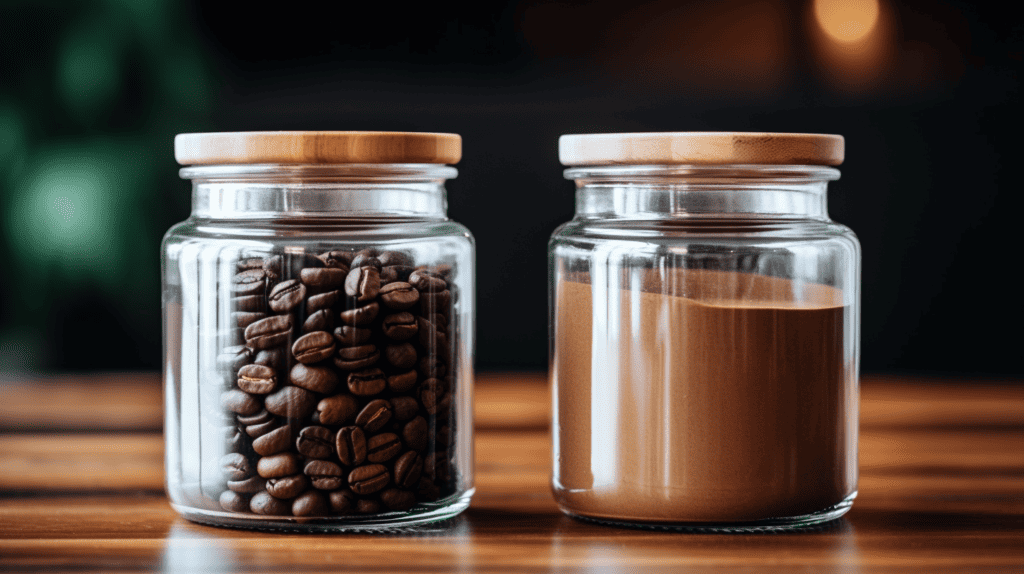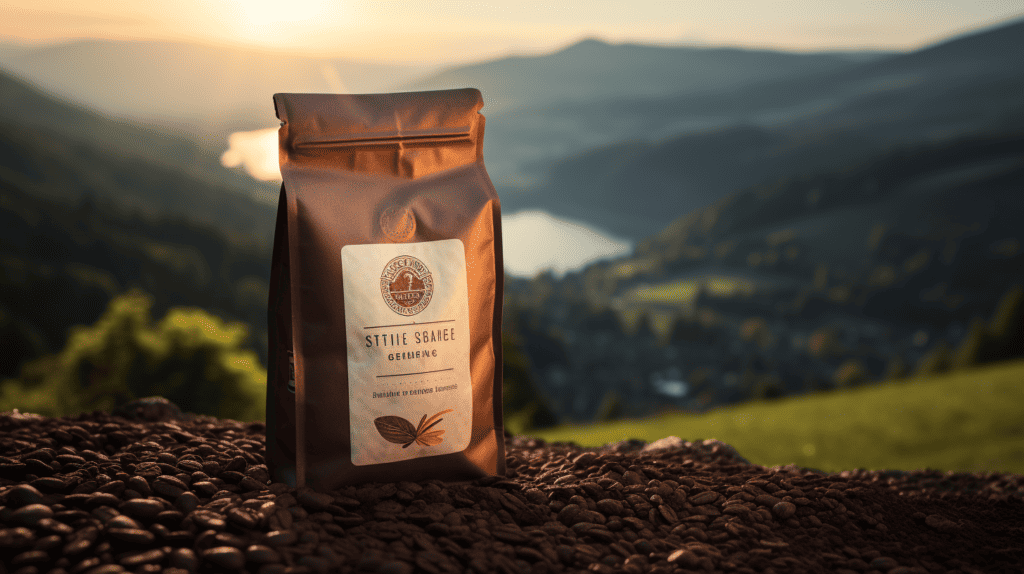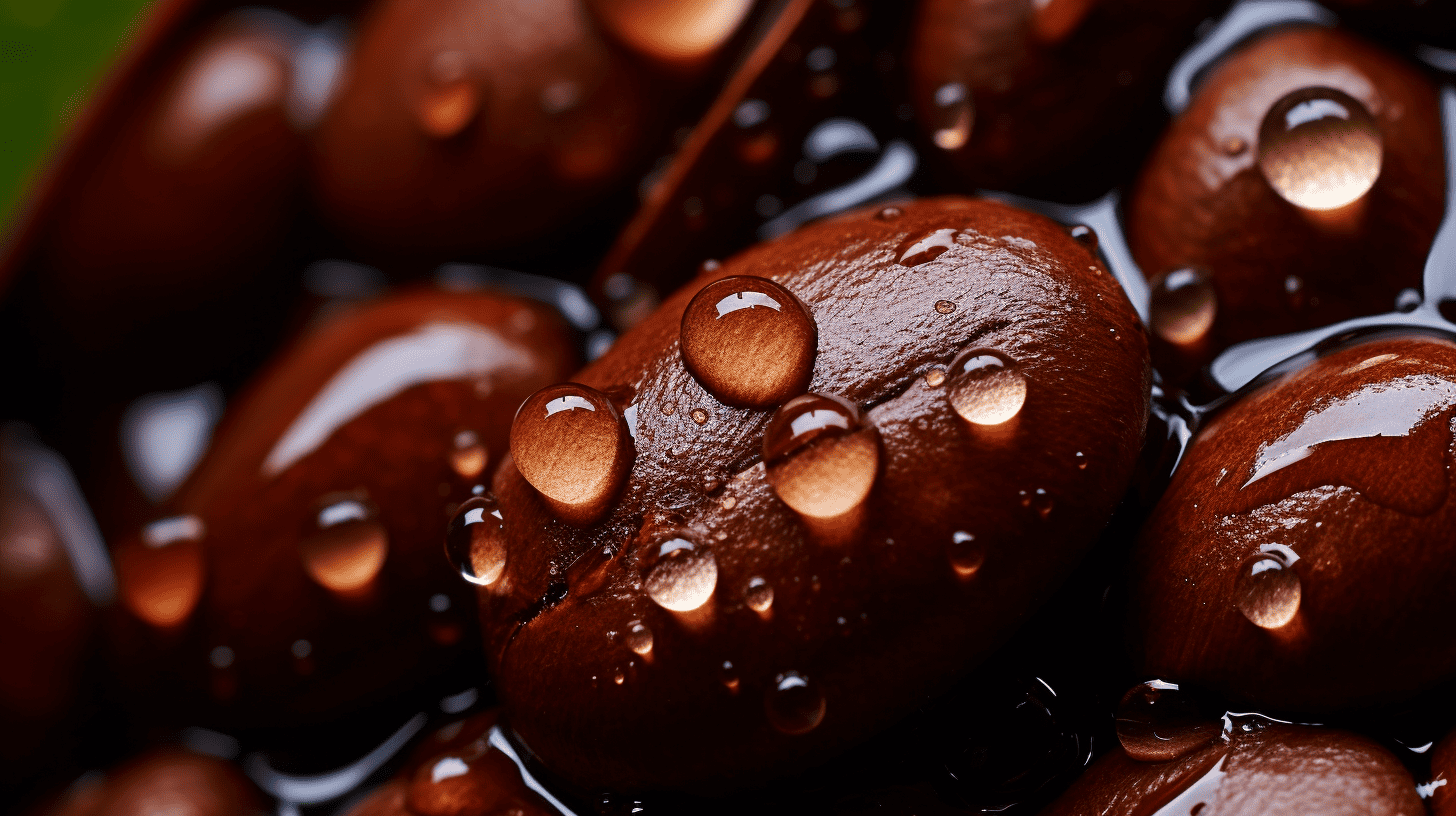Are you a coffee enthusiast struggling with the dilemma of pre-ground coffee versus freshly ground beans? Did you know that once you ground coffee, it begins to oxidize and lose its rich aroma and flavor? This article aims to delve into the world of pre-ground coffee, illuminating its drawbacks as well as ways on how to keep it fresh.
Get ready for brewing secrets that could step up your cup of joe game!
Key Takeaways
- Pre – ground coffee starts to oxidize and lose its aroma and taste once it’s been ground, so it’s best to grind your own beans right before brewing.
- Using airtight containers and storing pre-ground coffee in a cool, dark place can help maintain its freshness for longer periods.
- Freezing pre – ground coffee can preserve its flavor, but proper storage in an airtight container is crucial to prevent moisture absorption and flavor contamination.
- While grinding your own whole beans is recommended for the best-tasting cup of joe, pre-ground coffee can be convenient when time-saving or traveling.
Reasons to Avoid Pre-Ground Coffee
Pre-ground coffee should be avoided due to the loss of freshness and flavor, oxidation and degradation of coffee oils, as well as the inconsistent grind size.
Loss of freshness and flavor
Ground coffee gives up its taste fast. Once you grind the beans, they start to go stale. Coffee lovers know that fresh is best. Pre-ground coffee cannot keep up with freshly ground in terms of flavor and smell.
Stale coffee lacks a rich aroma and bold taste. The best cup comes from whole bean coffee roasted recently then ground right before brewing. Freshly made grounds make your coffee drink full of life, giving a better buzz than old pre-ground ones.
Oxidation and degradation of coffee oils
When coffee beans are ground, the oils inside them come into contact with oxygen in the air. This exposure causes oxidation, which leads to a loss of flavor and freshness in pre-ground coffee.
The process of oxidation can also degrade the quality of coffee oils, affecting the taste even more. That’s why freshly ground coffee is generally preferred because it retains its natural flavors and aromas for a better coffee experience.
So if you want to enjoy the best cup of joe possible, it’s best to grind your own beans right before brewing.
Inconsistent grind size
The grind size of your coffee beans plays a crucial role in the flavor and quality of your brew. When you buy pre-ground coffee, the grind size may not be consistent. This means that some particles will be too big, while others will be too small.
As a result, you won’t get an even extraction during brewing, leading to an imbalanced and unpredictable taste. It’s always better to grind your beans fresh so you can control the consistency and achieve the best flavor in each cup of coffee.
Can Pre-Ground Coffee Be Kept Fresh?
Proper storage techniques, such as using airtight containers or freezing pre-ground coffee, can help maintain its freshness and flavor.
Proper storage techniques
To keep pre-ground coffee fresh, follow these proper storage techniques:
- Use airtight containers: Transfer the pre-ground coffee into airtight containers to prevent exposure to air and moisture, which can degrade the flavor and quality.
- Store in a cool, dark place: Keep the containers of pre-ground coffee in a cool and dark location, away from direct sunlight or heat sources. This helps preserve the freshness and prevents any unwanted flavor changes.
- Avoid frequent opening: Limit the number of times you open the container to reduce oxygen exposure. Open it only when necessary to maintain the coffee’s freshness for longer periods.
- Use small containers: Divide larger quantities of pre-ground coffee into smaller portions before storing them. This minimizes air contact each time you open the container, helping to keep the remaining coffee fresh.
- Avoid freezing pre-ground coffee: While freezing is sometimes suggested, it can adversely impact the flavor and aroma of pre-ground coffee due to moisture absorption and potential for flavor contamination from other frozen foods.
- Pre – ground coffee oxidizes much more quickly after the beans have been ground.
- Pre – ground coffee starts to oxidize and quickly loses its aroma and taste.
- Whole bean coffee maintains freshness significantly longer than ground coffee.

Using airtight containers
Using airtight containers is essential to keep pre-ground coffee as fresh as possible. These containers help to prevent air and moisture from getting in, which can cause the coffee to lose its flavor and become stale quickly.
Airtight containers also protect the coffee from absorbing any odors or flavors from other foods in your pantry or fridge. By storing pre-ground coffee in an airtight container, you can extend its freshness and maintain its full-bodied taste for a longer period of time.
It’s important to note that even with proper storage in an airtight container, pre-ground coffee will still start to lose some of its freshness and aroma within a week or two after opening.
Freezing pre-ground coffee
Freezing pre-ground coffee is a way to help preserve its flavor and freshness for a longer period. When you freeze the coffee, it slows down the oxidation process and helps retain more of its original aroma and taste.
However, it’s important to properly store the pre-ground coffee in an airtight container or freezer bag before freezing it. This will prevent any moisture or odors from affecting the quality of the coffee.
Remember to only thaw out the amount of coffee you plan to use immediately, as repeated freezing and thawing can degrade flavor and quality.

When Pre-Ground Coffee Could Be Suitable
Pre-ground coffee can be a good option when convenience and time-saving are top priorities, or when you’re traveling or camping. But there are ways to enhance the flavor even with pre-ground coffee – read on to find out more!
Convenience and time-saving
Pre-ground coffee can be a convenient option if you’re looking for a quick and easy way to make coffee. With pre-ground coffee, you don’t need to grind the beans yourself – it’s ready to go straight into your coffee maker.
This can save you time in the morning when you’re rushing to get out the door or when you don’t have access to a grinder while traveling or camping. However, it’s important to note that convenience comes at a cost.
Pre-ground coffee loses freshness and flavor more quickly than whole-bean coffee because it oxidizes faster once ground. So while pre-ground coffee may be convenient, if you want the best possible taste and aroma from your cup of joe, grinding your own beans is still the recommended way to go.
Traveling or camping situations
Pre-ground coffee can be convenient if you’re on the go or planning a camping trip. It saves you the hassle of carrying a coffee grinder and grinding your beans yourself. When you’re out in nature or traveling, it may not always be feasible to bring whole bean coffee and grind it fresh.
Pre-ground coffee is easy to pack and use with minimal equipment. While it may not offer the same freshness as freshly ground coffee, it can still provide a decent cup of joe when you’re away from home.
So, if convenience is your top priority during your travels or outdoor adventures, pre-ground coffee may suit those situations.

Tips for Enhancing Pre-Ground Coffee
– Choose high-quality brands that have a reputation for delivering superior flavor and freshness.
– Invest in a coffee grinder to achieve a more consistent grind size, resulting in better extraction and taste.
– Experiment with different brewing methods, such as French press or pour-over, to bring out unique flavors in your pre-ground coffee.
Discover how these simple tips can elevate your pre-ground coffee experience.
Selecting high-quality brands
To ensure a great cup of pre-ground coffee, it’s important to choose high-quality brands. Look for brands that source their beans from reputable coffee farms and roasters. High-quality brands often provide information about the origin of their beans and the roast level, allowing you to select the flavor profile that suits your preferences.
Additionally, consider looking for brands that use sustainable and fair trade practices, as this ensures ethical sourcing of coffee beans. By selecting high-quality brands, you can be confident in the freshness and flavor of your pre-ground coffee.
Using a coffee grinder for better consistency
Using a coffee grinder can greatly improve the consistency of your pre-ground coffee. Here are some tips for achieving better results:
- Invest in a good quality burr grinder. This type of grinder produces more consistent particles compared to blade grinders.
- Adjust the grind size according to your brewing method. Finer grinds are generally used for espresso, while coarser grinds are suitable for French press or cold brew.
- Grind just before brewing. This helps preserve the aroma and flavor of the coffee by minimizing exposure to air.
- Use a timer or weigh your coffee beans to ensure you’re using the correct amount for your desired strength.
- Avoid grinding too much at once and store any excess in an airtight container away from light and heat.
Experimenting with different brewing methods
To enhance your pre-ground coffee experience, try experimenting with different brewing methods. Here are some ways to do it:
- French Press: This method involves steeping ground coffee in hot water and then pressing a filter to separate the grounds. It produces a rich and full-bodied cup of coffee.
- Pour Over: With this method, you pour hot water over a filter containing ground coffee in a cone-shaped dripper. It allows for precise control over the extraction process and results in a clean and well-balanced brew.
- Aeropress: The Aeropress uses air pressure to extract flavors from the ground coffee. It’s known for producing a smooth and concentrated cup of coffee, similar to espresso.
- Espresso Machine: If you have an espresso machine at home, you can use pre-ground coffee to make espressos, lattes, or cappuccinos. Adjust the grind size and extraction time to achieve your desired strength and flavor.
- Cold Brew: Cold brew involves steeping coarsely ground coffee in cold water overnight. It results in a less acidic and smoother cup of coffee that is perfect for hot summer days.
- Moka Pot: Moka pot brewing combines pressure and heat to extract flavors from ground coffee. It produces a strong and robust cup of coffee with a unique taste profile.
Conclusion on Pre Ground Coffee 💭
Avoiding pre-ground coffee is best if you want the freshest and most flavorful cup of joe. Pre-ground coffee loses its freshness quickly due to oxidation and degradation of oils.
However, if convenience is your priority or you’re on the go, pre-ground coffee can still be suitable with proper storage techniques. Remember that freshly ground coffee will always give you a better-tasting experience.
FAQs on Pre Ground Coffee
1. What is pre ground coffee?
Pre-ground coffee refers to coffee beans that have already been crushed into a fine powder or coarse grind before packaging.
2. How long does pre ground coffee stay fresh?
Once opened, pre-ground coffee can stay fresh for about 1-2 weeks if stored in an airtight container in a cool and dark place.
3. Can I use pre ground coffee with any type of coffee maker?
Yes, you can use pre ground coffee with most types of coffee makers, including drip brewers, French presses, and espresso machines.
4. Is pre ground coffee as good as freshly ground beans?
While freshly ground beans offer the best flavor and aroma, pre-ground coffee can still produce a decent cup of joe if purchased from a reputable brand and used within its freshness period.
Additional Resources:
- https://coffeeconfidential.org/grinding/ground-coffee/
- https://www.foxcoffee.com.au/blogs/blog/pre-ground-coffee-is-it-that-bad
- https://www.mashed.com/330265/dont-buy-any-more-ground-coffee-before-reading-this/
- https://perfectdailygrind.com/2018/12/is-pre-ground-coffee-ever-better-than-freshly-ground/





Leave a Reply